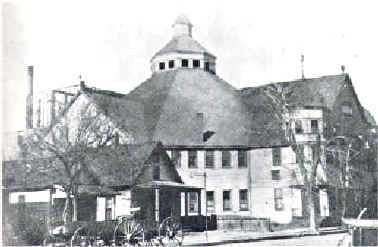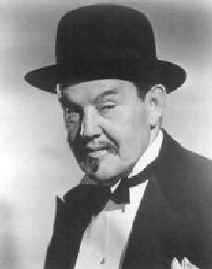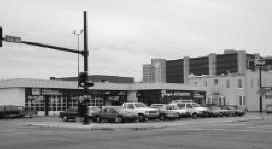|
Then and Now: Toler Opera House

|
THEN: The Auditorium was located on the southwest corner of First and St. Francis. |
In the 1890s, Wichitans felt the need for a large city auditorium and had started the structure. It was used, even though not completed. About 1895 a fund drive was initiated to raise the necessary money to make interior improvements. The June 20, 1896 Wichita Beacon stated, "Work will begin on the Auditorium galleries next week, making a place where 5,000 people can be seated. Contributors of one dollar each are asked to call and leave their dollars with Mr. Bitting." Names of the one dollar contributors were listed in the paper.
By Oct. 8, 1896, the Wichita Eagle could report, "Completion of the interior of the Auditorium is under way. Heretofore it has resembled an immense barn as much as anything else. Now all the old building paper which was tacked on the walls is being removed and it is being sealed with nicely dressed lumber.
"A major improvement is the addition of the gallery, which has been planned for a long time. The large pillars which support it have been in place for some time along with a few of the joists, but now they are all in and a good strong balcony has been put in. The seating capacity previously was about 1,600 with plenty of room left, but now it has risen to about 2,800."
By Jan. 1897, Vitascope exhibitions were held in the facility and in October, William Jennings Bryan gave an address there. However, the finances of the Auditorium were not good. The July 20, 1900 Wichita Eagle wrote, " The Auditorium yesterday passed into the hands of the Mutual Real Estate association, having been sold at a sheriff’s sale after the recent foreclosure of a mortgage. The mortgage with accrued interest amounted to $3,800.
"The Auditorium building was erected a few years ago by popular stock subscription at a cost of about $7,500 for holding of large conventions and entertainments, but sufficient funds could not be realized from its operation to offset the cost of construction, and a mortgage on the same was executed.
" The Auditorium was never wholly completed, but it has on many occasions accommodated large crowds, it having a seating capacity of about 3,000."
In Dec. 1900, the Auditorium was purchased by Colonel H. G. Toler and was renamed the Toler Opera House. Toler was an influential Wichitan who owned a nationally recognized stock farm northeast of the city. He installed a modern stage and made other improvements.
Toler’s wife, Sallie, took an active part in the theater and encouraged her son, Sidney, to study acting. He showed a very early interest in the theater and acted in an amateur production of "Tom Sawyer" at the age seven. After leaving Wichita, he pursued his acting career and became best known for his movie portrayal of Charlie Chan, the Chinese detective.
 |
Sidney Toler, best known for his portrayal of Charlie Chan, the Chinese detective, made his debut on the Toler Opera House stage. |
The "Toler" operated yearly as a theater until the end of the 1912 season. Toler sold the building. It reopened briefly but soon the seats were removed and Innes and Company used it as a warehouse.
The building was condemned and was demolished in the spring of 1918. By June, 1919, a Standard Oil service station had been built on the site.
(Notes for the above article were gathered from the Tihen Notes, Special Collections, Wichita State University)
 |
NOW: The site of the Toler Auditorium is now occupied by the Tracy’s Automotive building and parking lot. |
10/19/03